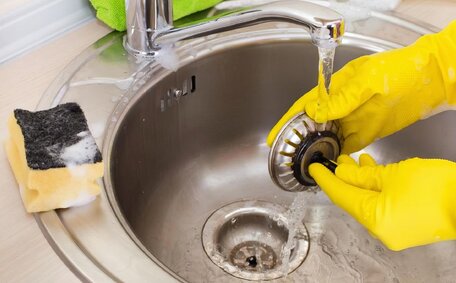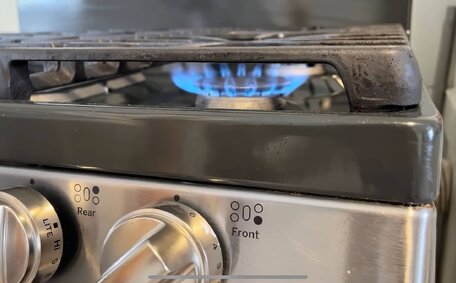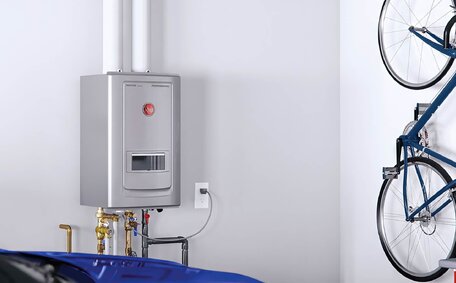Introduction to Hot Water Systems in Your Home
Access to hot water is fundamental for daily tasks, particularly in Pennant Hills where the climate can demand it.
Electric water heaters employ heating elements, and gas systems utilise a pilot light and burner. They both necessitate correct installation, regular maintenance and prompt troubleshooting for safe, efficient function. Disruptions in hot water supply can be caused by leaks, pressure issues, sediment accumulation, defective components or electrical faults.
This comprehensive guide outlines common hot water issues, offering solutions and advising when to seek help from Pennant Hills plumbers. It provides a clear roadmap for DIY troubleshooting and signals when it’s time for professional intervention.
Common Causes of Hot Water Loss
Leaks
A frequent culprit for hot water troubles is a leak in the system, which even in small sizes can result in pressure drops. Diligently inspect the hot water system for leaks at valves, pipe joints, the tank, and connections, looking for signs of dripping or moisture.
Sediment Buildup
Mineral deposits and sediment naturally gather in your tank and pipes over time, hindering the system’s ability to heat water efficiently. Yearly draining and flushing can considerably reduce sediment accumulation.
Faulty Thermostat
Pilot Light or Heating Element
Gas water heaters rely on a pilot light to ignite the burner and heat water. If this goes out, it must be manually relit. Electric heaters use internal heating elements that can wear out over time and stop heating.
Tripped Breaker or Valves
A tripped circuit breaker can disconnect power to electric units, while inadvertently closed shut-off valves or defective pressure relief valves can hinder the hot water supply in any system.
Checking Your Electric Water Heater
Several troubleshooting steps can ensure the restoration of hot water in homes with electric and gas water heaters:
Check the Circuit Breaker and Wiring
Ensure the circuit breaker is flipped fully to 'On’ and check if this restores hot water. Anticipate a 20-30 minute wait for the water to heat up and circulate.
Locate your home’s electrical service panel and check if the specific breaker has flipped to the “Off” position. The circuit breaker connected to your water heater could have tripped, cutting power to the unit.
Also inspect the power cables and wiring leading into the water heater for damage. Faulty connections can prevent electricity reaching the internal heating elements.
Test the Water Heater Thermostat
Your electric heater’s thermostat regulates the temperature. Consult the manual to locate and test it with a multimeter for malfunctions. A high-temperature cut-off switch, if tripped, may also require a manual reset.
Replace Heating Elements
Inside the tank are electric heating elements that heat the water. If sediment has built up on them, or they have worn out over 5-8 years of use, they may fail to heat water properly. Turn off power to the unit, drain out some water, then inspect elements for any corrosion or gaps needing replacement.
Exercise caution around electric and water connections, and if the problem persists, our Pennant Hills electricians and plumbers are ready to help restore your hot water supply.
Inspecting Your Gas Water Heater
Begin by checking the pilot light in gas water heaters. Consult your owner’s manual for relighting instructions if the flame is extinguished.
Locate the access panel and view window showing the pilot light assembly. Sometimes moisture or debris can prevent the pilot from igniting.
It’s also crucial to check for gas leaks, which can disrupt the heater and pose safety risks if inhaled. Use a soapy water solution around pipe joints and fittings to spot any bubbles indicating leaks. If so, turn off the gas valve and call the gas company immediately.
Inspect the gas supply lines and pipes ensuring they are all properly connected without blockages. Faulty fittings, kinks in hoses, and clogged heat exchangers or burner tubes can obstruct gas flow. It may require disassembly to view specific components, so exercise caution.
Inadequate water pressure impedes the delivery of hot water. Verify operation of inlet valves, pressure relief valves, and supply lines. If gas water heating system problems carry on, seek advice from our Pennant Hills plumbers.
When to Call a Professional Plumber or Electrician
If your troubleshooting efforts don’t yield hot water, it’s wise to consider when professional help from a plumber or electrician is necessary.
Persistent Hot Water Loss
If hot water outages become frequent or you’ve made several failed attempts to relight the pilot or reset components without success, the system likely requires a more advanced diagnostic and repair. Our experienced local technicians have the proper tools and expertise that can fix more complex underlying issues correctly.
Suspected Gas Leaks
In case of a suspected gas leak from your hot water system or appliances, immediately contact Pennant Hills Plumbing. We have specialised equipment for gas leak detection and the capability to repair and conduct safety tests adhering to standards.
Complicated Electrical Faults
While basic electrical testing of your water heater can be a DIY task, complex issues requiring open covers or in-depth diagnostics are best served by qualified electricians. Beware, as faulty connections can expose electrics to water.
Contact us via email or on 1300 349 338 for swift support in safely restoring your hot water, with same-day inspections available. Our skilled technicians can resolve even the most persistent hot water troubles.
Hot Water System Maintenance Tips
Routine maintenance not only reduces costs but also prolongs the life of your hot water system. For Pennant Hills homeowners, here are essential upkeep tips:
Inspect Annually
Annually inspect pipes and valves for leaks, corrosion, improper bends and ensure connections are secure. Position insulation blankets correctly and remove debris around outdoor units to maintain optimal function.
Drain Sediment from Tank
Sediment buildup reduces heating efficiency. Drain 1-2 buckets from the tank’s drain valve yearly to flush some sediment. Consider a full flush every 3 years.
Test Temperature and Pressure Relief Valve
Ascertain the functionality of this safety valve by testing the lever, and plan to replace it every 5 years.
Check Anode Rod
This rod protects the tank from corrosion. Unscrew it yearly to check condition and replace if deteriorating.
Consider Water Softener
Installing a water softener can counteract the rapid scale buildup caused by hard water, which otherwise shortens system life.
Call our team on 1300 349 338 if you need a licenced Pennant Hills plumber to service your hot water system.
Safety Precautions When Troubleshooting
Safety is paramount when addressing any troubleshooting with your Pennant Hills hot water system.
Switch Off Power to Electric Units
Commence inspections on electric water heaters by switching off the power at the main or circuit breaker. For expert guidance or if in doubt about safe procedures, get in touch with us. Avoid contact with electrical equipment when wet to prevent electrocution hazards.
Check Gas Valves Are Closed
For gas systems, confirm the main gas valve is securely turned off before opening any panels or igniting the pilot light. Check pipe joints with soapy water after relighting to ensure no leaks.
Exercise Caution When Draining Units
Hot water can cause burns. Drain tanks slowly into buckets and wait for units to fully cool before conducting maintenance. Wear protective gloves when handling fittings.
Locating the Source of the Issue
When troubleshooting a no hot water problem in your Pennant Hills home, start by confirming your main water supply is turned on. Check that the shutoff valve located near the water metre is fully open and allowing water flow.
Then inspect If water coming out cold from taps is as expected first. If not, there may be an issue with your overall water pressure that needs resolving before addressing the hot water system.
If the cold water flow appears normal, concentrate on the hot water unit. Follow the troubleshooting steps mentioned before methodically to determine which component is malfunctioning.
Identifying whether the issue stems from water supply lines, heating elements, thermostat valves, or other facets assists in pinpointing the primary fault for an accurate remedy. Ensure safety during assessment and consult our Pennant Hills plumbers if difficulties continue.
Resetting Tripped Fuse or Circuit Breaker
If the issue causing your hot water loss is an electrical problem, one of the first things to check is whether a fuse has blown or a circuit breaker has tripped. Locate your home’s electrical service panel, which may be inside the garage, laundry, or utility area.
Check the circuit breaker or fuses connected to the hot water system. Fuses should appear intact, while circuit breakers will be flipped to the "Off" position when tripped. Carefully flip the switch to "On" or replace the blown fuse with a new one of the same amperage.
Verify panel labels to confirm which fuse or breaker is for the hot water system. After resetting power, allow 20-30 minutes for the water in the tank to heat and circulate. Avoid frequently switching the system on and off.
If the issue recurs, contact a licenced electrician to inspect your electrical panel, wiring and water heater components. A more serious underlying fault may require professional diagnosis and repairs to prevent damage or unsafe conditions.
Checking the Thermostat and Heating Elements
Checking the thermostat and heating elements is an important troubleshooting step for electric water heaters. Here’s how to get your hot water system back to optimum performance:
- Locate the access panel to view the thermostat on your water heater. Check the manual for its exact location.
- Test that the thermostat is still accurately sensing and controlling the temperature. Use a multi-metre to check for faults.
- Look to see if the high-temperature cut-off switch has been tripped. These typically have just a button you’ll need to press - that’s all you need for a manual reset.
- To check the heating elements, you’ll likely need to switch off and drain some water out of the tank first before removing access covers.
- Visually inspect the electric heating elements for any signs of damage, corrosion or gaps.
- Use a multimeter to check them for continuity. If there’s no longer continuity, they will need replacement.
Take care not to directly touch any wet electrical equipment or components inside the tank. If after inspection you’re still uncertain of the issue, contact our professional Pennant Hills electricians for assistance. We have the expertise to accurately diagnose and repair your hot water system.
Identifying Leaks
Detecting leaks is vital to assessing hot water system issues. Wisely examine the tank, pipes, valves, and connections for any signs of leaks, represented by water traces, dampness, or corrosion.
Even small leaks can reduce water pressure and impact your hot water supply. They also run the risk of causing water damage to your property if left unresolved. Catching and repairing leaks early is crucial.
Perform regular visual checks for leaks during routine hot water system maintenance. See bubbles with an applied soapy solution. Have a licenced Pennant Hills plumber fix any leaks found as soon as possible to prevent disruption or safety hazards.
Relighting the Pilot Light
When your gas water heater stops supplying hot water, initially verify if the pilot light has extinguished by viewing the pilot assembly through the access panel.
Before attempting to relight, check if there any leaks and turn off the gas supply valve to avoid hazard. Open the cover panel and locate the igniter button. Push this in while holding a long lighter wand or burning match near the pilot tube to ignite the gas.
Continue holding down the igniter for 30 seconds after the flame lights for the sensor to warm up, then release.
Replace the access panel before slowly turning the gas supply back on. Check for leaks with soapy water. Finally, allow 30 minutes for the heater and water to reheat.
If the pilot repeatedly goes out or fails to stay lit, there may be an obstruction in the gas line or a draught blowing out the flame. Our technicians can provide professional pilot light and burner repairs for reliable hot water.






